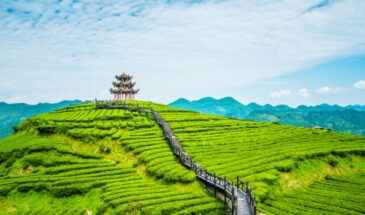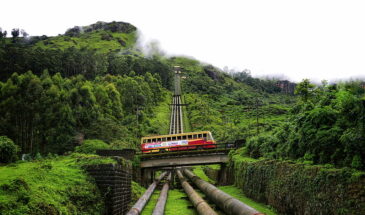- Overview
- Trip Outline
- Trip Includes
- Trip Excludes
- Gallery
- Reviews
- Booking
- FAQ
About:
Munnar is a town and hill station located in the Idukki district of the southwestern Indian state of Kerala. Munnar is situated at around 1,600 metres (5,200 ft) above mean sea level, in the Western Ghats mountain range. Munnar is also called the "Kashmir of South India" and is a popular honeymoon destination.
History: The region has been inhabited by hunter-gatherer tribals like the Malayarayan and Muthuvan for thousands of years. In the early days, only Tamils and few Malayalis lived there. They were brought as workers in the tea plantations .Tradition states that Colonel Arthur Wellesley, later the Duke of Wellington, was the first British person to pass through Munnar during Tippu Sultan's campaign in Travancore, but this is unsubstantiated. The first survey of the terrain was undertaken by Benjamin Swayne Ward in 1816–1817, who followed the Periyar into the Western Ghats and established a camp at the confluence of three rivers, from which the name of Munnar is derived.
It was to be nearly 50 years later that Sir Charles Trevelyan, Governor of Madras, instructed Col. Douglas Hamilton to explore the hill country in the western part of the Madras Presidency, requesting special advice on the feasibility of establishing sanatoria for the British in the South and of developing revenue- earning projects without endangering the environment, as had happened in Ceylon where coffee had destroyed not only the rain forest but also paddy cultivation in the north-central rice bowl of ancient Ceylon. Hamilton climbed throughout the Ghats in Munnar region. 15 years later, John Daniel Munro noted that much of Munnar's land was suitable for coffee plantations. Munro, Henry Turn and his half-brother AW Turner obtained ownership of the Cardamom Hills from the Raja of Travancore and began clearing forest around Devikulam in 1879. Soon many other Europeans began establishing tea plantations in the area throughout the 1880s. Early plantations had few facilities and were mainly huts of straw.
Eventually roads were opened to the lowlands and in Bodinayakanur in western Madras Presidency, planters got provisions from a local headman - Suppan Chetty. He and his son, Alaganan Chetty (later an MLA) would continue providing supplies to the tea estates in the region. By 1894, 26 estates were established in the hills but all were facing losses. In 1897, a separate company, Kannan Devan Hills Corporation (KDHC) was registered to operate the tea estates which was later taken over by the American Direct Tea Trading Company Ltd., who owned 26 estates, most with coffee and some with cinchona, almost all in the area except for a few in the lower areas.
In 1900, a ropeway was built and eventually monorails were installed for easier transport of goods to the plains. In 1901, P. R. Buchanan took over as General Manager and began the most extensive clearing of jungles for plantations. In 1908, construction started on a new railway which opened in 1909. By 1911, around 16,000 acres of the region was under cultivation.
In 1924, a flood swept through Munnar, damaged the road and destroyed the rail track. In its place it was decided to create a ropeway to transport tea. In 1930, this in turn was replaced by a modern road that made transport much easier. By 1952, almost 28,000 acres of land was under cultivation. After Independence, Indian planters took over. In 1964, the KDHC which owned most tea estates was acquired by Tata and Finlay who started the first instant tea factory in the country. In 1971, the Kerala government wanted to reforest all land in the hills not used for plantations. However negotiations that followed resulted in Tata keeping most of the land, leaving it with 57,000 acres.
To this day, most tea estate labourers are landless. In the early 2000s, the Viduthalai Chiruthaigal Katchi, a Dalit outfit from Tamil Nadu, started demanding land for the labourers, started making inroads into Kerala. In 2009, VS Achuthanandan promised his support for providing land to the mainly Tamil Dalit estate labourers. However, the process became very slow and as of 2018, most families still hand no land.[9]
The former Kunda Valley Railway in Munnar was destroyed by a flood in 1924, but tourism officials are considering reconstructing the railway line to attract tourists.
Best Time Visit: October to February
Transportation
Road: Munnar is well connected by both National highways, state highways and rural roads. The town lies in the Kochi - Dhanushkodi National highway (N.H 49), about 130 km (81 mi) from Cochin, 31 km (19 mi) from Adimali, 85 km (53 mi) from Udumalpettu in Tamil Nadu and 60 km (37 mi) from Neriyamangalam.
Distance from major cities & tourist destinations.
Aluva - 109 km
Varkala - 245km
Trivandrum - 280km
from Kochi - Ernakulam - 150 km
Rail: The nearest major railway stations are at Ernakulam (126 km) and Aluva (110 km). Kerala State Road Transport Corporation (KSRTC) bus stand is walking distance from Aluva Railway Station, and buses are available for Munnar every hour. The Nearest functioning Railway station is at Udumalaipettai.
Air: The nearest airport is Cochin International Airport, which is 110 kilometres (68 mi) away. The Coimbatore and Madurai airports is 165 kilometres (103 mi) from Munnar.
No details found.
Itineraries
Day 1
Cochin to Munnar
On your arrival at Cochin International Airport/ Railway station, meet our executive to Welcome & receive you. Later drive to Munnar hills (130 Kms), the green Paradise of Kerala with unending expanses of Tea plantations, spice plantations and a variety of flora and fauna. On the way visit two beautiful waterfalls as Cheeyappara and Valara along with the foggy Tea meadows across the hills and valleys. Check in your hill resort and afternoon at leisure/ you can go to visit Munnar town and nearby places & Overnight stay.
Day 2
Munnar sightseeing
Sightseeing destinations includes eravikulam national park (Raja Malai), mattupetty dam, tea estates, Eco point, spice plantation, rose garden, photo point, honey bee tree, tea museum, blossom park, kundale dam and top station. You can also enjoy boating in the Lake, rock climbing, trekking (optional) Overnight stay at Munnar.
Day 3
Munnar-Thekkady
Today after breakfast check out your hotel and drive towards Thekkady, the Wildlife destination of Kerala. Its also known as the spice bag of the state. You can enjoy a beautiful journey through the hills and valleys of Western Ghats to reach this jungle destination. Check in your hotel and later go for an optional Kathakali show, Spice plantation visit, elephant ride, or an Ayurvedic massage treatment there. Also have an amazing boat ride in Periyar Lake which flows through the Periyar tiger reserve. You will have chance to watch the wild animals like elephant, Bison, Sambar, Deer etc are roaming the both shore. Overnight stay.
Day 4
Thekkady to Cochin
After breakfast check out from hotel proceed visit remaining sightseeing till evening. After that proceed to Cochin then drop at Airport/Railway Station/Bus Station for drop before 10:00 pm. Here the tour end with sweet and grab memories with Grabur Holidays Pvt Ltd.
- Accommodation 01 rooms for 03 night.
- Breakfast complimentary.
- All taxes of hotels and vehicles.
- All sightseeing and transfer by Dzire AC/ similar.
- Toll, Parking, Driver Allowance, Fuel Charges.
- Monument Entrance fee at places.
- Personal expenses like shopping and Laundry.
- Travel Insurance.
- GST 05% extra on the total amount.
- Lunch & Dinner at all places.
No Details Found












There are no reviews yet.